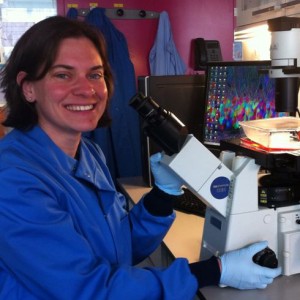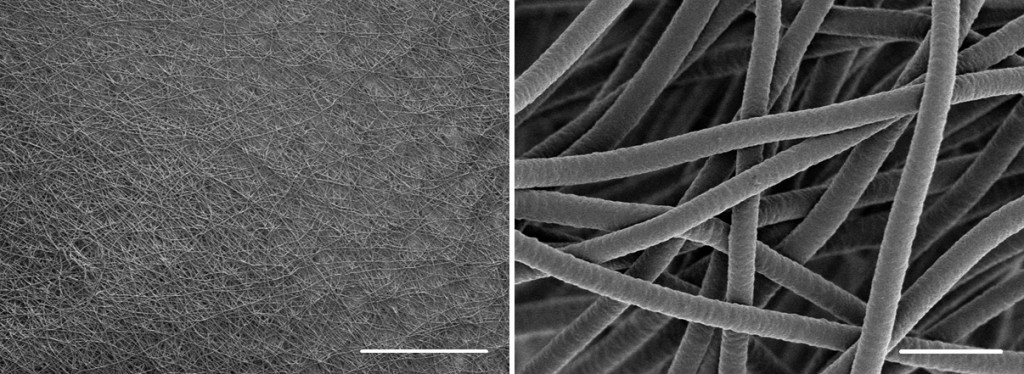 Anne Géraldine Guex is a post-doctoral fellow at Imperial College London researching nano-materials.
Anne Géraldine Guex is a post-doctoral fellow at Imperial College London researching nano-materials.
In a few words, what are you working on?
I work in the field of tissue engineering. My research focus is on the development of polymer scaffolds that are then used as substrates in cell cultures. We are trying to combine these biocompatible scaffolds and cells to produce in vitro engineered tissues that can be implanted to regenerate or substitute diseased or lost tissue (muscle, bone, cartilage) in a patient.
Can you explain a typical experiment and which kind of data do you normally collect for your research?
In a typical experiment, I seed cells – bone cells, muscle cells, stem cells – on a previously developed scaffold. I then collect data on the proliferation and differentiation of cells and compare these findings with results on cells on other scaffolds.
When publishing your results, are you sharing the raw data in any form – is there a standard format for sharing data in your specific research community or even in the wider field?
We do not normally share raw data and I am not aware of any standards to do so. Data are usually collected in triplicates and then presented in graphs as mean +/- standard deviation or in representative microscopy images. Differences among groups are then compared with statistical analysis. We usually only present processed data and discuss the interpretation and conclusion thereof.
Do you think your field would profit from data sharing? How?
In general, I am under the impression that our field would profit a lot from sharing data, especially if more ‘negative results’ and raw data were published. Our experiments typically start with the hypothesis “material A does XYZ on a certain celltype C”. However, if a cell reacts unexpected the results are buried in the lab notebook, while it would be really valuable for the whole community to know about these ‘negative results’. We could all save time, money and energy if we would know what has been tried before, what works and especially what doesn’t. Unexpected results could be important for a different research group to build new hypothesis on. I am in favour of more communication, more exchange and honest results – yes to data sharing!

Scanning electron microscopy (SEM) images of electrospun fibres at lower and higher magnification. Scale bar: 500um and 10 um, respectively.
How do you imagine a journal like Scientific Data can help in this process?
It’s hard to predict how much such a journal or a new format would help the process. It probably highly depends on the scientists’ willingness to share data or publish them in a new format. It seems rather unusual nowadays and would require a certain amount of “mind change”- I would assume that a lot of people still fear some sort of competition. But providing a data-sharing platform would hopefully encourage this process. In an ideal world, all previous work (i.e. all that published raw data and even ideas) would have to be appreciated and acknowledged in papers that are published based on this knowledge.
Do you see a difference in data sharing practices between the older and younger generations of researchers in your area?
This a tricky question. I am in the lucky position to work and interact in a field of very young scientists (my professor/PI is only 40) and in a (local) community where collaborations and data sharing seem highly appreciated. I have not been working with “old” scientists. But the younger generation is probably more open to new formats of data presenting/sharing. As an example, we just switched our most recent postdoc meeting from formal 10 minutes oral presentations to an informal and highly interactive “speed dating” version, where postdocs can interact one by one. I would imagine that scientific speed dating was not a daily occurrence during meetings of previous generations. I also observed a certain freedom during manuscript preparation. Data can be presented in different graphs, images etc. Some papers do now require graphical abstracts, other journals are purely video based (JoVE) – it all seems to change from a standardised procedure to a bit more ‘open’. Since we grew up with Facebook and constant sharing, we might look different at data sharing. Although, I would be surprised to see ‘selfies’ of researchers with their cells and data-plots in the future…
Interview by Sylvia Tippmann, a freelance journalist based in London, UK